Experts pick their English Heritage favourites
Country Life asked celebrities and curators to pick their favourite objects and buildings in the care of English Heritage
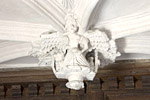

London Wall, London EC3
Boris Johnson, Mayor of London I nominate London Wall, because it reminds us that this city was founded by a bunch of pushy Italian immigrants, and that it was more than 1,000 years before London's population was once again at the levels achieved in Roman times.
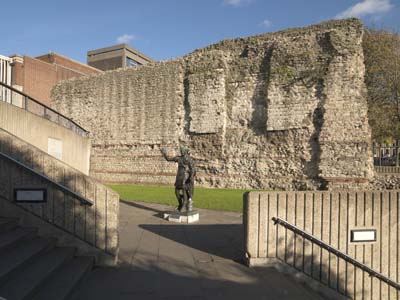
Battle of Hastings at Battle Abbey, East Sussex Loyd Grossman, chairman of the Heritage Alliance Frank Wilkin's vast (possibly the largest picture in the kingdom) and melodramatic 1820 painting of the Battle of Hastings is one of the many pleasures for me of Battle Abbey, a thoroughly delightful mélange of medieval ruin and Victorian reconstruction set on some of the most historically charged earth in Britain. There is also something thrilling and melancholy about standing on the spot where King Harold was killed and our history changed forever.
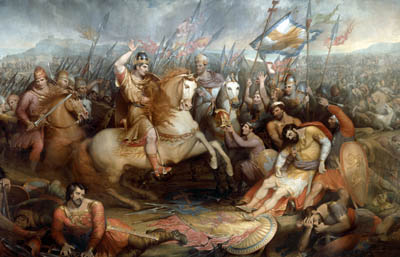
Castlerigg Stone Circle, Cumbria Joan Bakewell, presenter and journalist I find Castlerigg stone circle one of the most inspiring places in the country. Its setting is amazing: there's a 360˚ view of the mountains. The circle itself is imposing and complete. With the weather changing at all times, each visit is a new experience. I've seen it in sun and storm and never tire of it.
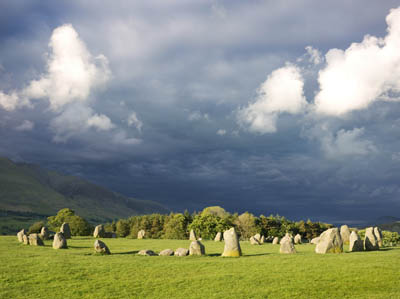
Apsley House, London W1 Peter Snow, broadcaster I would choose Apsley House. For me, it's the most evocative historical site in the country, the home of my all-time military hero, the Duke of Wellington. The great Waterloo dining room is the most striking feature of all: for more than three decades, the Duke and his dwindling team of commanders dined there together on each anniversary of the Battle of Waterloo. On the walls of Apsley House is the astonishing haul of Old Master paintings that Wellington was given by the Spanish royal family after his soldiers seized them from the fleeing Joseph Bonaparte in 1813.
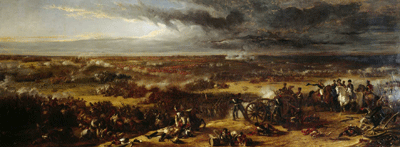
Toy animals, from the home of Charles Darwin, Down House, Kent Annie Kemkaran-Smith, curator, English Heritage This set of toy animals belonged to the Darwin children and probably formed part of a Noah's Ark play set. I love the fact that all the animals are obviously so well played with, as many of them have broken legs and worn paint. It's also amusing that there are typical British farm animals mixed in with beasts from the wilds of Africa-you can only imagine what games were dreamed up with this selection. By looking at them, you get a real sense of a happy childhood surrounded by toys and fun.
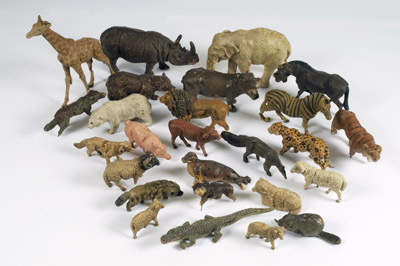
Wellington Arch, London W1 Bill Bryson, president of the CPRE I like the Wellington Arch at Hyde Park Corner in London. It's one of the city's most obvious but undervisited glories. Many people don't even realise you can go up into the arch, but you most assuredly can and should, as the view is magnificent and it's only when you reach the viewing terrace that you realise just how imposing and lofty an edifice it is. Inside is a thoroughly absorbing museum. All in all a terrific diversion.
Sign up for the Country Life Newsletter
Exquisite houses, the beauty of Nature, and how to get the most from your life, straight to your inbox.
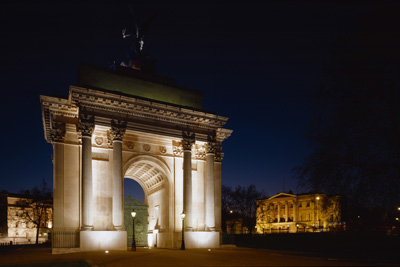
Photograph of ‘herring girls' packing fish on the old pier at Scarborough, 1900 Catherine McHarg, National Monuments Record, English Heritage I like this because it shows how the pier would have been used and records the life of the herring girls, who followed the fishing boats down the coast to gut and salt the fish they caught, a way of life that has now disappeared. I use this with schoolchildren to illustrate ‘rich and poor', asking them to fill in speech and thought bubbles for different people in the photograph.
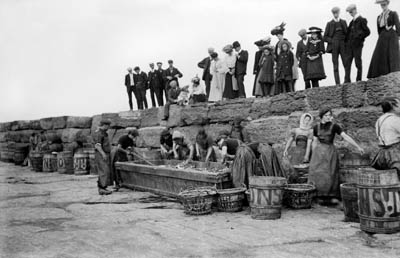
Viking Raider Stone from Lindisfarne Priory, Northumberland Martin Allfrey, head curator, English Heritage Lindisfarne is one of my favourite places. In crossing the tidal causeway to the windswept island and the ruined priory, you start to feel something of the vulnerability of the first monks. This stone, with its procession of armed men bearing swords and axes, has long been interpreted as a memorial to the Viking Raid on the priory in ad793, when the building was destroyed.
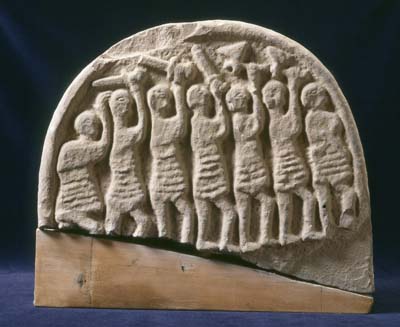
Rievaulx Abbey, North Yorkshire Dr John Sentamu, Archbishop of York A highlight for me last year was my visit to Rievaulx Abbey as part of the celebrations to mark the 900th birthday of St Aelred, who founded it. St Aelred described Rievaulx more than eight centuries ago. He said: ‘Everywhere peace, everywhere serenity, and a marvellous freedom from the tumult of the world.' I believe that this description is valid today. It's an amazing place and you almost feel as if the monks had never left.
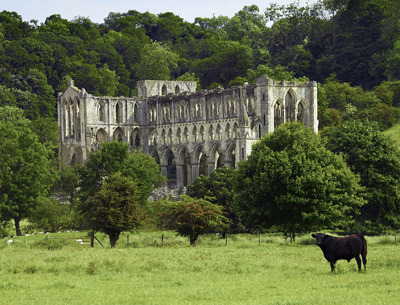
Philip Stanhope, Portrait at Ranger's House, London SE10 Philip Mould, art dealer I would urge every parent to stand before this portrait. It was commissioned by the 14 year old's godfather, the 4th Earl of Chesterfield, who gave himself the challenge of turning a jovial yob into a prodigy through learning and example. He instructed the painter John Russell to deck him out in Van Dyck costume, and to place the Latin quote ‘ERIS' (‘Thou shalt be') above his head, so the painting is an ironic memorial to the fact that he failed. The boy was nicknamed Sturdy, and he fell uncomfortably short of reaching the academic heights his godfather sought. The portrait is about the universality of teenage archness. I know it through my own parental experiences. One feels that all Sturdy really wants to do is to go off and play on Facebook.
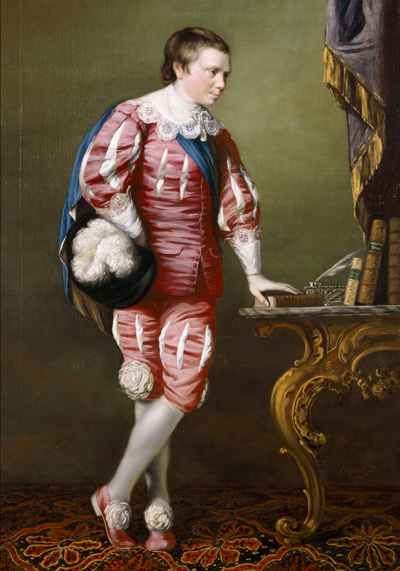
Bayham Old Abbey, Kent Ray Porter, South-East properties curator, English Heritage My favourite site is Bayham Old Abbey, primarily because of the romantic beauty of the abbey ruins within their Reptonian landscape setting, but also because of the all-too-human failings of the Premonstratensian canons, who were reprimanded in 1488 for their fashionable footwear. Surely it was no coincidence that large numbers of late-medieval shoes were discovered during excavations in the monastic latrine?
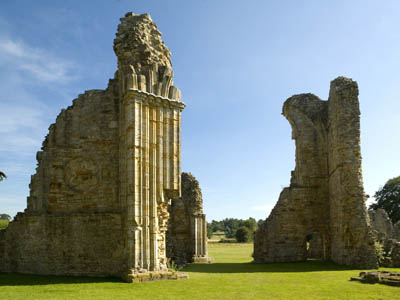
Plasterwork ceiling, the Old Merchant's House, Great Yarmouth, Norfolk Bronwen Riley, managing editor guidebooks, English Heritage The tantalising, swaggering plasterwork ceiling at the Old Merchant's House is early 17th century, proudly bearing the coat of arms of James I, but its chunky ribs look as if they have been piped out like icing sugar. And the pendants are the oddest things. A curious winged figure, like a ship's figurehead with a pig at her side and what looks like a partridge in a basket. Perhaps these are punning references to the owner's name? The ceiling evokes the prosperous, teasing world of a merchant in a town that Dickens was later to call ‘the strangest place in the wide world'.
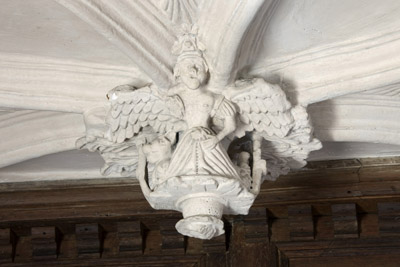
Statue of Juno, from Chesters Roman Fort, Northumberland Georgina Plowright, curator, English Heritage This nearly life-size statue shows the goddess Juno as the consort of Jupiter Dolichenus, an eastern god whose cult originated in Turkey. The beautiful delicacy of her representation and the detail with which her clothing has been sculpted -her necklace, the wind-blown skirt and the embroidered stole wrapped around her waist-suggests she may be the work of an eastern sculptor. In Palmyra last year, I saw wonderful carvings of weaves and textures in use on fabrics. It reminds me that-due to the ravages of our wet climate-we have lost the transient weaving, knotwork, embroidery and other crafts that must have enlivened Roman Britain.
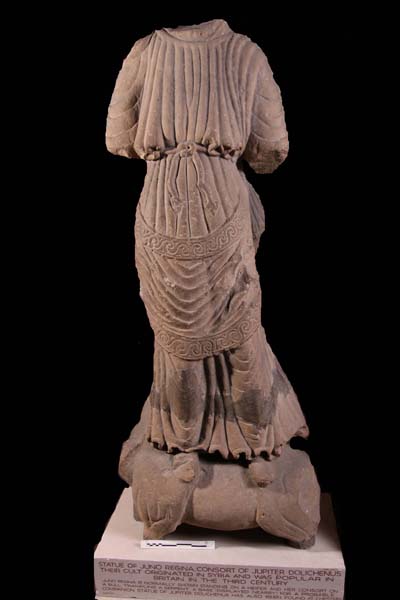
The Great Eastern Photograph of the building of Brunel's ship on the banks of the Thames at Blackwall, 1857 Mary Mills, National Monuments Record, English Heritage I like this photograph because it shows a scene you wouldn't see today, in an area that has changed out of all recognition. It strikes me that health-and-safety rules were rather different then, with nothing more than what appear to be matchsticks propping up the great vessel. I like how the sheer scale of the ship is emphasised by the tiny people and horses below-and is that Brunel himself in the familiar hat?
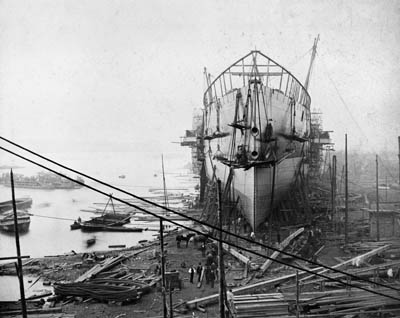
Iron Bridge, Shropshire Terence Conran, designer I love the world's first iron bridge, across a gorge in Shropshire. In 1779, the architect Thomas Pritchard came up with the design for a single span crossing over the River Severn. The components were cast at Coal-brookdale and assembled on site, charmingly adapting joints used in woodworking. There's always something thrilling to me about high spans over gorges. The Iron-bridge Gorge is now a World Heritage Site, and is a reminder that Britain was once the workshop of the world. That will never happen again, but we could still have workshops if designers and entrepreneurs used their skills to make products of quality.
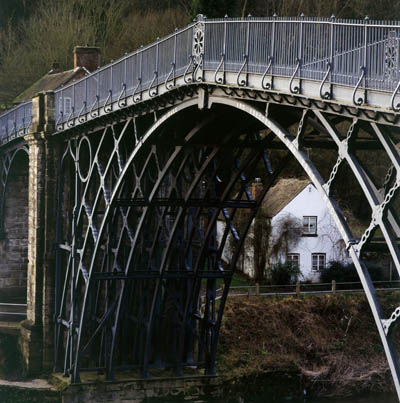
Kirby Hall, Northamptonshire Emma Bridgewater, pottery designer My mother's kitchen wall was entirely covered by cuttings and postcards. Among them was a wonderfully romantic full-page spread of Kirby from a colour supplement of the 1970s. It showed the building set amid tall grass and it caught my imagination as a child. Many years later, I visited it. You couldn't fail to be stirred by the building and the sense of greatness departed. It is fascinating to think of the house being built to please Elizabeth I.
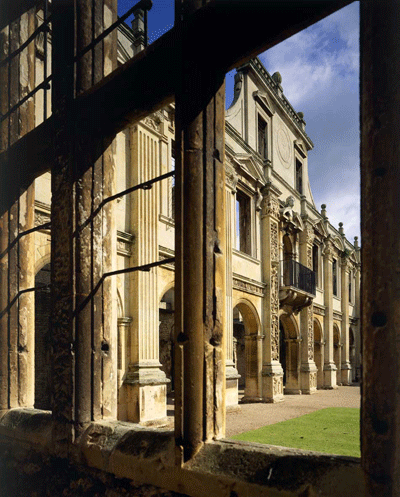
The home of Charles Darwin, Down House, Kent David Attenborough, naturalist Darwin's thoughts revolutionised the biological sciences. Although the trigger may well have been what he had seen in the Galápagos Islands, it was in the Kentish village of Downe that he developed them and put them on paper. And there, in the splendidly restored Down House, you can see the study and the garden where he developed those profound thoughts.
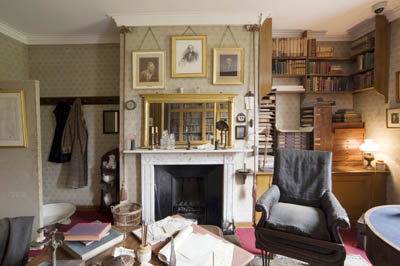
Photograph of St Edward's, Brotherton with the cooling towers of Ferrybridge B power station, taken by Eric de Mare in the 1960s Mike Evans, head of archives, English Heritage I love this photograph because it captures a tension between old and new without bullying the viewer or forcing them to take sides-and because it's very beautiful.
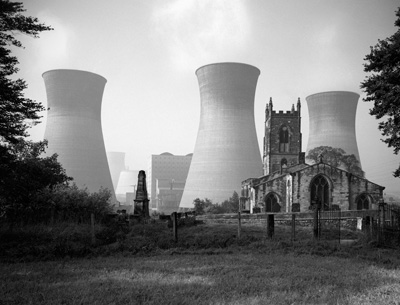
Grimspound, Devon Paul Pattison, senior properties historian, English Heritage I love Grimspound, a prehistoric settlement of round houses surrounded by a strong stone wall on Dartmoor. Remote and isolated today-I nearly froze to death surveying and recording it one January some years ago-it once formed part of a more densely peopled landscape that has almost completely disappeared. On a bad day, you can't see five yards; on a good one, your view is wild and breathtaking, with very few buildings. One such, tantalisingly about a mile across the valley, is the tiny Warren House Inn, which sometimes seems like the restaurant at the end of the universe.
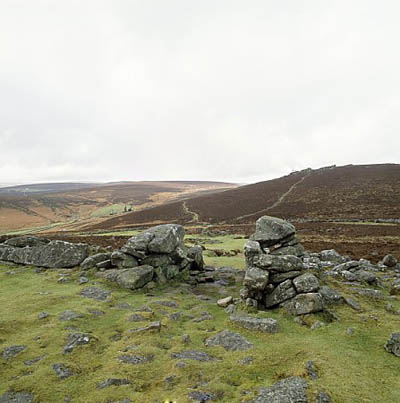
Rushton Triangular Lodge, Northamptonshire Richard Lea, historic buildings analyst, English Heritage Designed by Sir Thomas Tresham and built between 1593 and 1597, the Triangular Lodge is a delightful building. Whereas most architecture is ruled by the geometry of the square or rectangle, this building is born out of the number three. The triangle appears as a motif in the plan and is everywhere in the surface decoration. The result is thus a testament to Tresham's Catholic faith, standing for the Holy Trinity. At the time of building, this was both a political and a dangerous statement to make and yet there is also an element of humour: the number three, in French, offers a pun on Tresham's name: in letters, his wife addressed him as ‘Good Tres'.
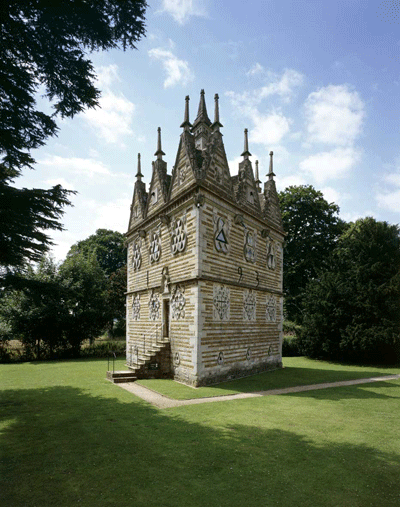
Old London Bridge at Kenwood House, London NW3 Alice Tate-Harte, fine art conservator, English Heritage This painting, by Claude de Jongh, is one of my favourites, as I had the privilege of working on it and seeing its beautiful details up close under the microscope. It is wonderfully painted with an economical but effective technique. Of course, it's also of a very evocative subject, a view of London that I see most days, but which has changed so dramatically.

Country Life is unlike any other magazine: the only glossy weekly on the newsstand and the only magazine that has been guest-edited by HRH The King not once, but twice. It is a celebration of modern rural life and all its diverse joys and pleasures — that was first published in Queen Victoria's Diamond Jubilee year. Our eclectic mixture of witty and informative content — from the most up-to-date property news and commentary and a coveted glimpse inside some of the UK's best houses and gardens, to gardening, the arts and interior design, written by experts in their field — still cannot be found in print or online, anywhere else.
-
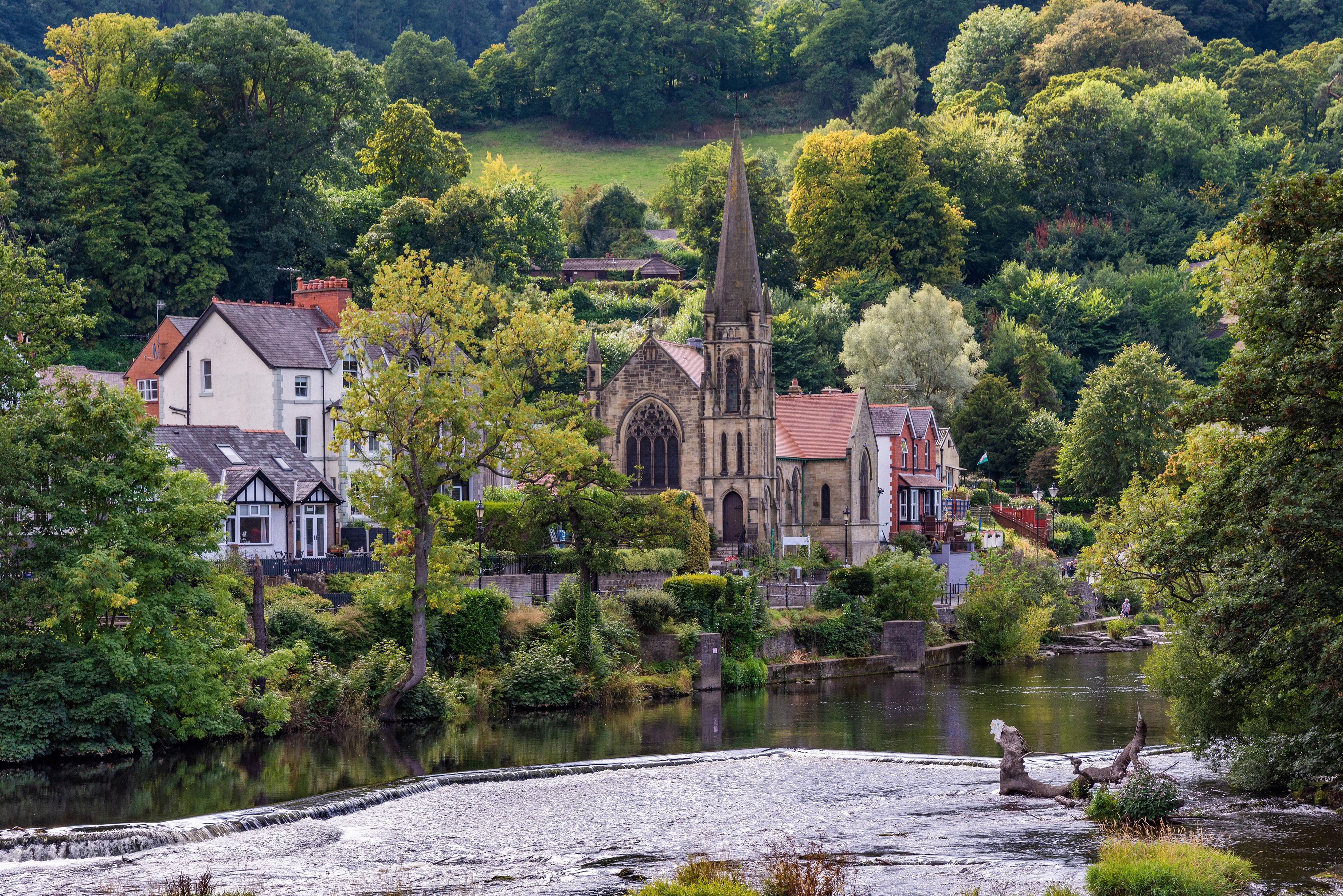 About time: The fastest and slowest moving housing markets revealed
About time: The fastest and slowest moving housing markets revealedNew research by Zoopla has shown where it's easy to sell and where it will take quite a while to find a buyer.
By Annabel Dixon
-
 Betty is the first dog to scale all of Scotland’s hundreds of mountains and hills
Betty is the first dog to scale all of Scotland’s hundreds of mountains and hillsFewer than 100 people have ever completed Betty's ‘full house’ of Scottish summits — and she was fuelled by more than 800 hard boiled eggs.
By Annunciata Elwes